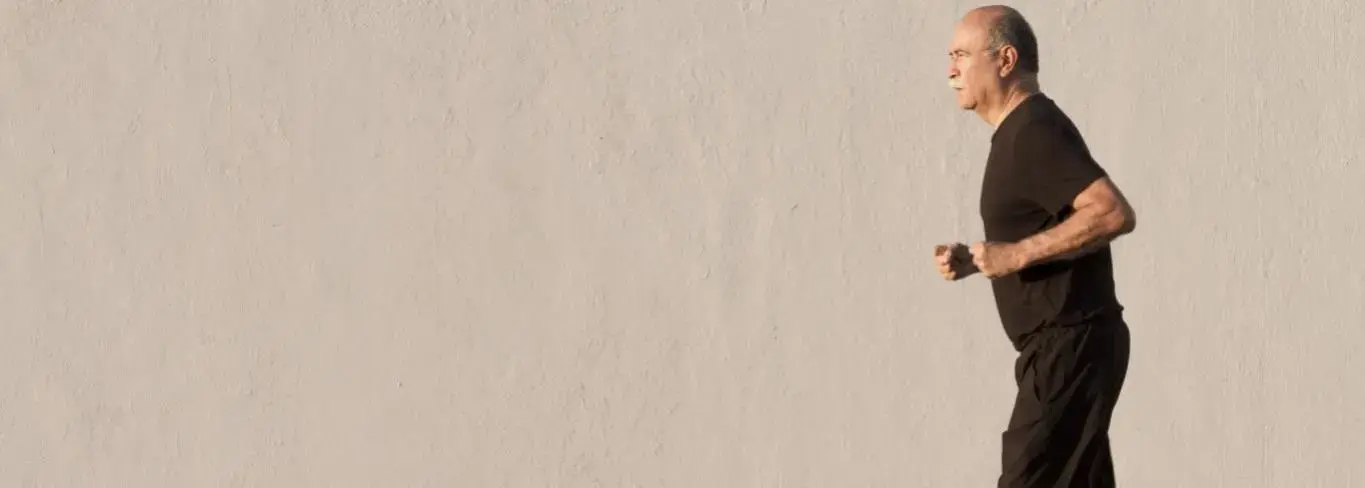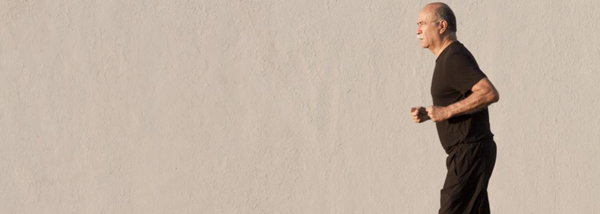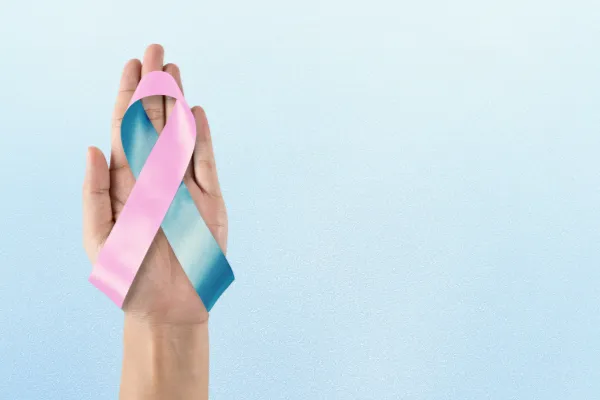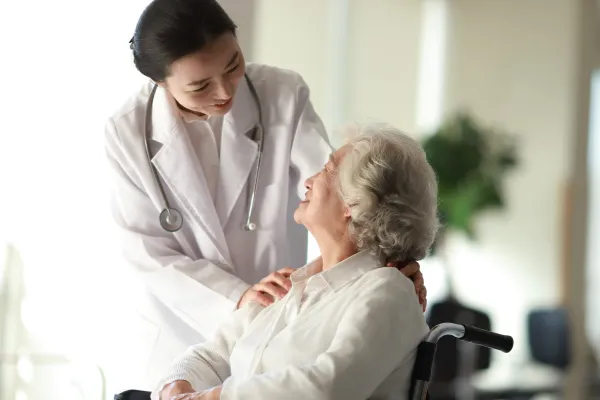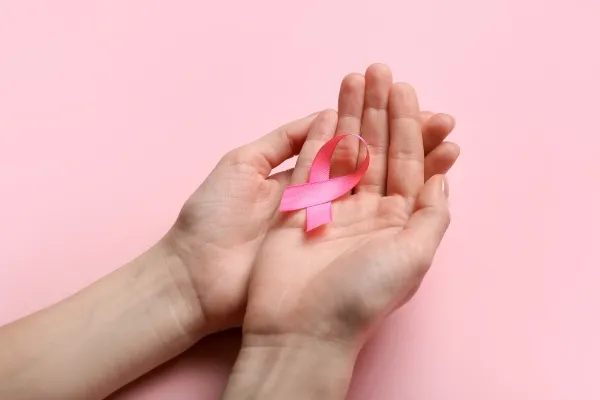Topics
What are the parts of the musculoskeletal system?
The human musculoskeletal system is made up of bones, joints, muscles, ligaments, tendons, and cartilage. They support your weight and assist you in moving.
Bones
Our body is supported by bones, which allow us to walk and perform other daily movements. They also keep our organs safe and release calcium when required. Calcium is a mineral essential for building and keeping our bones strong and for our cells to function.
The bones, which are structures that make up the skeleton, are the main part of our musculoskeletal system. A human infant typically has about 270 bones which fuse to form 206 to 213 bones in an adult. The variation in the number of bones is because certain persons may have a varying number of ribs, vertebrae, and digits.
There are three main layers to a bone:
- Periosteum: The tough membrane that covers and shields the outside of the bone is called the periosteum.
- Compact bone: The compact bone that lies beneath the periosteum is white, hard, and smooth. It protects and supports the structure.
- Spongy bone: When compared to compact bone, the inner core or layer of the bone is softer. It stores marrow by having tiny holes called pores.
Joints
There are different kinds of joints, including joints that do not move such as the suture joints in the skull. These joints are fixed in one place. There are also joints that are capable of movement such as those found in the vertebrae.
Muscles
Muscles are made up of a lot of elastic fibres. The functions of these muscle types vary. Muscles allow you to run, jump, or perform other tasks.
Ligaments
The joint is surrounded by strong ligaments, which are tough, elastic bands of connective tissue. They provide support and restrict the joint's movement. Ligaments hold the bones together.
There are four main ligaments that hold your leg bones together and keep the knee stable:
- Anterior cruciate ligament (ACL)
- Posterior cruciate ligament (PCL)
- Medial collateral ligament (MCL)
- Lateral collateral ligament (LCL)
The cruciate ligaments are within the knee joint. The anterior cruciate ligament (ACL) crosses over the posterior cruciate ligament (PCL) in the back to form an X. The knee's front and back motions are controlled by the cruciate ligaments.
The collateral ligaments are on the sides of your knee. The lateral collateral ligament (LCL) is on the outside and the medial collateral ligament (MCL) is on the inside. The knee's movement from side to side is controlled by them.
Tendons
The tendons are a different type of tough connective tissues that connect the muscle ends to your bone. These tendon structures typically look rope-like. They control joint movements.
Cartilage
The cartilage is a kind of tissue that covers the bone's surface at the joints. Cartilage aids in the reduction of friction from joint movement.
What are the common conditions of the musculoskeletal system?
Arthritis is a condition that when one or more of the joints are inflamed. It causes joint stiffness, pain, and inflammation. Generally, arthritis occurs among adults but in rare cases, children are affected as well. There are several types of arthritis such as osteoarthritis, rheumatoid arthritis, post-traumatic arthritis, and septic arthritis.
Osteoarthritis is a condition that can affect people of any age, but older people are more likely to develop the condition due to the breakdown of cartilage in their joints. Rheumatoid arthritis, ankylosing spondylitis, and gout are three other forms of arthritis that can also cause joint pain and inflammation.
An abnormal growth of cells within a bone. A bone tumour may be cancerous (malignant) or noncancerous (benign). When bone cells start to divide abnormally and uncontrollably, they can form a mass or lump of tissue. Depending on the condition, bone tumours can be surgically removed and treated.
Carpal tunnel syndrome is a condition that causes numbness, and tingling sensation in your hands and fingers. Carpal tunnel syndrome occurs when the median nerve is compressed and entrapped. If carpal tunnel syndrome is left untreated for an extended period of time, it can worsen and cause dysfunction of the hand, including loss of sensation in the fingers.
Osteoporosis is a disease characterised by a reduction in bone density and bone mass. This would not only decrease bone strength but can lead to low impact trauma fractures (broken bones). Most common osteoporotic fractures occur in the hip, vertebra (spine bone) and wrist.
Spine conditions include disc degeneration (intervertebral disks tend to wear and shrink), degenerative spondylolisthesis (difficulty for the spine to be in correct position), spinal stenosis (spinal cord narrows and adds pressure on the cord and spinal nerves), and scoliosis (abnormal curve of the spine).
Sports injuries occur while playing sports or exercising. Sports injuries can result from accidents, poor training practices, inadequate equipment, and overuse of a body part. Not warming up or stretching enough before play or exercise can also lead to injuries.
Some of the common sports injuries include:
- Sprains and strains: A sprain is a ligament that becomes stretched or torn. The body's joints are supported and stabilised by ligaments and a damaged ligament may affect overall mobility.
- Ligament tears: A ligament tear occurs when a ligament is stretched too far or forced to move in the wrong direction. These injuries are frequently the result of an abrupt fall, twist, or impact. Ligament injuries occur frequently, particularly in the knee, ankle, wrist, neck, finger, or a thumb. Anterior cruciate ligament (ACL) tear in the knee is a common injury in some sports.
- Tendonitis: Tendonitis or tendinitis is a condition in which the connective tissues (tendons) that connect your muscles to your bones get inflamed. Tendonitis can be painful and often brought on by doing the same thing over and over. It frequently occurs in the Achilles tendon, base of the thumb, elbow, knee, shoulder, and hip.
- Joint hyperextension: Hyperextension indicates excessive straightening (joint movement) in one direction. This means that the joint has had to move outside of its normal range of motion. As a result, the tissues surrounding the joint may suffer damage as a result and the ligaments that normally stabilise the joint can stretch or tear in more severe cases.
- Meniscus tear, rotator cuff injuries
Trauma include:
-
Fractures: The most common cause of fractures is seen when there is excessive force applied to the bone. When they are twisted, bones are its weakest. Fractures likely happen when there is a direct blow or kick to the body, falls, trauma, or both.
- Closed fractures (broken bone that does not puncture the skin)
- Open fractures (broken bone that punctures the skin)
- Stress fractures (small cracks in the bone due to repetitive movement or action or overuse)
-
Dislocations (a joint forced apart and out): When the bones of a joint are out of place, dislocation occurs. A joint can be completely or partially dislocated, which is also known as subluxation. Trauma, such as a car accident or a fall, or weakening of muscles and tendons, can result in a dislocation.
For more information about musculoskeletal conditions, symptoms, and diagnosis, visit www.pantai.com.my/orthopaedic
What are the treatment options for musculoskeletal conditions?
R.I.C.E. method
Known as the Rest, Ice, Compression and Elevation method, it is commonly used as the initial treatment for musculoskeletal conditions.
- Rest: Take a break from the activity that caused the injury. Resting the affected area and avoiding activities that cause pain and irritation can help reduce inflammation and promote healing.
- Ice: Apply cold packs for 20 minutes several times in a day. However, it should be noted that ice should not be applied to the skin directly. Follow your doctor’s instruction.
- Compression: Wearing an elastic compression bandage will keep you from getting any more swollen or bleeding.
- Elevation: While lying down, elevate the injury higher than your heart to reduce swelling.
Pain relief and management
Over-the-counter pain medications such as acetaminophen or nonsteroidal anti-inflammatory drugs (NSAIDs) are used to relieve pain and reduce inflammation. Topical creams or patches containing NSAIDs may also be prescribed by your doctor depending on your condition.
Corticosteroid injections may be recommended to reduce pain and inflammation in more severe cases.
Physiotherapy
Stretching and range of motion exercises for the shoulder are part of the treatment. However, before stretching, heat may be used to help loosen the shoulder.
Under the guidance of a physiotherapist, physiotherapy can help to strengthen muscles, improve flexibility, and restore range of motion. Apart from exercises, your physiotherapist may also use techniques such as ultrasound, massage, or electrical stimulation to help reduce pain and promote healing.
Surgery
In some cases, surgery may be necessary if other treatment modalities do not alleviate your symptoms.
For more information about the types of treatment options for musculoskeletal conditions, visit www.pantai.com.my/orthopaedic/treatment
How to keep your musculoskeletal system healthy?
Taking care of our musculoskeletal system is crucial to maintaining overall health and mobility. By prioritising the health of your musculoskeletal system, you can enjoy greater physical function and quality of life for years to come.
The best way to keep your musculoskeletal system healthy is by keeping your overall health checked. You should keep your bones, joints, and muscles healthy by:
- Regular exercise: Regular exercise and physical activity help to strengthen our bones, muscles, and joints, while also improving flexibility and balance. Be sure to incorporate both cardiovascular exercise and weight-bearing exercises into your routine. Muscles can be strengthened to support your joints and prevent damage.
- Adequate rest: Get adequate rest and quality sleep to allow recovery time for your muscles and bones to heal and grow.
- Maintain an ideal weight: Keep a healthy body weight. A variety of health issues can arise as a result of carrying extra weight on your bones and joints.
- Eat healthy: Choose healthy foods, including milk for strong bones, a balanced diet of fruits and vegetables, and lean protein.
- Quit smoking: Your body's blood flow is reduced when you smoke. To stay healthy, your bones, muscles, and soft tissues need enough blood flow.
- Practice good posture: Be mindful of your posture and body mechanics during daily activities in order to prevent unnecessary strain on your joints and muscles.
- Regular check-up: Participate in age-appropriate health screenings and regular examinations to help identify any potential issues early on and prevent more serious problems from developing.
Book an appointment at Pantai Hospitals
A dedicated and expert team of Orthopaedic specialists at Pantai Hospital is available for consultation to provide the best care and assistance.
The rehabilitation team at Pantai Hospitals are trained to provide the best care for our patients. Because each patient is different and will present with their own set of issues and symptoms, treatment plans are personalised.
If you encounter a situation that requires medical attention, please seek immediate medical attention at the Accident and Emergency (A&E) department at your nearest Pantai Hospital.
Pantai Hospital has been accredited by the Malaysian Society for Quality in Health (MSQH) for its commitment to patient safety and service quality.
References
-
OrthoInfo: Sprains, Strains, And Other Soft-Tissue Injuries. Available at https://orthoinfo.aaos.org/en/diseases--conditions/sprains-strains-and-other-soft-tissue-injuries/ [Accessed on 14 February 2023]
-
OrthoInfo: Sports Concussion. Available at https://orthoinfo.aaos.org/en/diseases--conditions/sports-concussion/ [Accessed on 14 January 2023]
-
OrthoInfo: Arthritis: An Overview. Available at https://orthoinfo.aaos.org/en/diseases--conditions/arthritis-an-overview/ [Accessed on 14 January 2023]
-
OrthoInfo: Paget’s Disease Of Bone. Available at https://orthoinfo.aaos.org/en/diseases--conditions/pagets-disease-of-bone/ [Accessed on 14 January 2023]
-
OrthoInfo: Osteoporosis. Available at https://orthoinfo.aaos.org/en/diseases--conditions/osteoporosis/ [Accessed on 14 January 2023]
-
JohnsHopkins: Fractures. Available at https://www.hopkinsmedicine.org/health/conditions-and-diseases/fractures [Accessed on 14 February 2023]
-
OrthoInfo: Common Knee Injuries. Available at https://orthoinfo.aaos.org/en/diseases--conditions/common-knee-injuries/ [Accessed on 14 February 2023]
-
JohnsHopkins: Anatomy Of A Joint. Available at https://www.hopkinsmedicine.org/health/wellness-and-prevention/anatomy-of-a-joint [Accessed on 14 February 2023]
-
OrthoInfo: Bone Health Basics. Available at https://orthoinfo.aaos.org/en/staying-healthy/bone-health-basics/ [Accessed on 14 February 2023]
-
OrthoInfo: Managing Pain With Medications After Orthopaedic Surgery. Available at https://orthoinfo.aaos.org/en/recovery/managing-pain-with-medications/ [Accessed on 14 February 2023]



